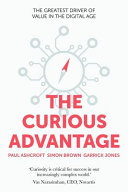

Curiosity is presented as a fundamental trait that drives innovation and learning. The authors argue that curiosity allows individuals to explore new ideas, challenge existing norms, and foster creativity. In a rapidly changing world, where knowledge becomes outdated quickly, a curious mindset is essential for continuous growth and adaptation. The book emphasizes the need to cultivate curiosity in both personal and professional contexts, encouraging readers to ask questions, seek out new experiences, and embrace uncertainty. By fostering a culture of curiosity, organizations can enhance their problem-solving capabilities and drive better outcomes.
Continue readingThe book discusses how technology can be leveraged to stimulate curiosity and facilitate learning. With the advent of digital tools, individuals have unprecedented access to information and resources that can enhance their understanding of complex topics. The authors highlight various technological platforms and tools that can be used to foster exploration and experimentation. They also emphasize the importance of using technology mindfully, ensuring that it serves as a means to enhance curiosity rather than distract from it. By integrating technology into the learning process, individuals can develop a more dynamic and interactive approach to acquiring knowledge.
Continue readingCollaboration is identified as a key driver of curiosity and innovation. The book illustrates how working with others can lead to richer insights and a deeper understanding of diverse perspectives. The authors advocate for creating environments that encourage teamwork and open dialogue, as these conditions can spark curiosity and lead to collective problem-solving. They provide examples of organizations that have successfully implemented collaborative practices to enhance learning and creativity. By valuing collaboration, individuals and organizations can tap into a wealth of knowledge and experience that can fuel their curiosity and drive innovation.
Continue readingThe authors emphasize the importance of reframing failure as a valuable part of the learning process. In a culture that often stigmatizes failure, the book encourages readers to view setbacks as opportunities for growth and exploration. By embracing failure, individuals can cultivate resilience and a willingness to experiment, which are essential traits for fostering curiosity. The authors provide strategies for developing a growth mindset that allows individuals to learn from their mistakes and continue pursuing their interests and passions. This perspective encourages a more adventurous approach to learning and innovation.
Continue readingThe book explores the link between curiosity and emotional intelligence (EQ). The authors argue that being curious about others' experiences and emotions enhances interpersonal relationships and communication. By developing empathy and understanding, individuals can create deeper connections and foster a more collaborative environment. The authors provide insights into how emotional intelligence can be cultivated through curiosity, encouraging readers to actively seek to understand the perspectives of others. This connection highlights the importance of curiosity not only for personal growth but also for building effective teams and organizations.
Continue readingThe concept of lifelong learning is central to the book's message. The authors advocate for a mindset that values continuous learning and exploration throughout one's life. They argue that curiosity should not be limited to formal education but should extend into all areas of life, including personal interests and professional development. The book provides practical tips for fostering a lifelong learning mindset, such as setting learning goals, seeking out new experiences, and reflecting on one's learning journey. By embracing lifelong learning, individuals can remain adaptable and relevant in an ever-changing world.
Continue readingThe authors outline strategies for organizations to cultivate a culture of curiosity among their employees. They argue that leadership plays a crucial role in fostering an environment where curiosity can thrive. The book emphasizes the importance of encouraging experimentation, providing opportunities for learning, and recognizing and rewarding curiosity-driven behaviors. By creating a supportive culture, organizations can enhance employee engagement, drive innovation, and improve overall performance. The authors provide case studies and examples of organizations that have successfully implemented such cultures, demonstrating the tangible benefits of prioritizing curiosity.
Continue reading